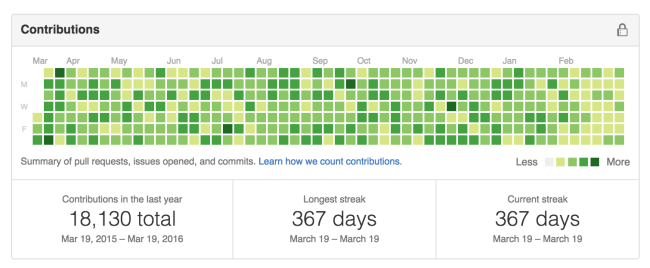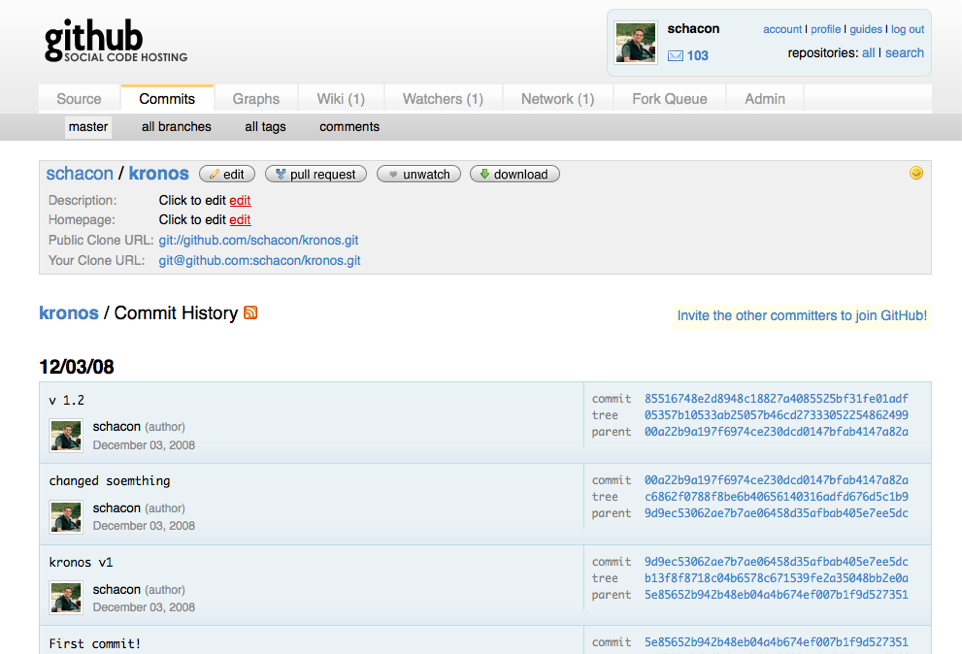

- #Github see commit history install#
- #Github see commit history code#
- #Github see commit history iso#
Scroll through diff for the stuff that changed in the file I am. Look at history and pick a date, copy hash. Switching to git this is now a grueling task. Scrolling through the dates and see a nice diff of exactly what changed in that file on that date. While you can always use Github online to view the public repository, navigating your local repo requires the use of CLI tools to view the Git commit history, like git log. Use AI to recall these various git commit history commands Right click on a file and select history. By default, this tool keeps the record for 90 days and lets you return to old commits not referenced by any branches.
#Github see commit history code#
Language: All artiebits / fake-git-history Star 478 Code Issues Pull requests Generate Git commits. Unlike git log, git reflog is a local recording of changes made and tracks commits across every branch. commit-history Here are 10 public repositories matching this topic. These commits may not show up when calling git log, but you may be able to recover it using git reflog. With Git, it's possible to lose a commit by accidentally using commands like git reset -hard or through Git's garbage collection which removes unreferenced objects from the repository. There may be instances when you use git log but the commit you are searching for is not showing up. git log : shows the commit history of the file pathĪs a developer working at a fast paced startup, I like to use git log -n -oneline to view a summary of the last n commits in one-liners.To see the most recent commit on each branch, as well as the branch names: git log -branches -not -remotes -simplify-by-decoration -decorate -oneline. git log : shows the commit history for the specified branch and any commits shared by it's parent branches To see all commits on all branches that have not yet been pushed: git log -branches -not -remotes.If there are multiple files in the commit or range of commits, click on an individual file to see the changes made to that file. You can also select a range of multiple consecutive commits using Ctrl or Shift. If you have not checked out a branch, this will show you the commit history of the entire repository. On the History tab, click the commit you'd like to review. git log: shows the commit history for the branch currently checked out.To list commits as a view of a branch's history, you can use the git log command with the branch name. Viewing a git branch’s entire historyĮach branch has a commit history. You can use HEAD~1 to go back an extra commit, HEAD~2 to go back two, etc. Yes, technically, you can visit past states of your project using Git commands locally. The ability to quickly explore different commits/states, switch between branches, inspect individual files, and see the discussion in linked issues is incredibly powerful. The HEAD here refers to the most recent commit within the git history of the project.war. 30.1 Hyperlinks are awesome This is where GitHub (and GitLab or BitBucket) really shine. Its what you use when you need to find a specific version of a project or figure. To see the changes made in the last commit without using a hash, you can use the git show HEAD command. The git log command is Gits basic tool for exploring a repositorys history. Don’t worry, Git has got you covered!īy running git log -p, you’ll get the same list as before, however each commit will have a list of the files that have been added/modified/removed, as well as the actual changes themselves.Show the last git commits Just knowing that some changes took place is great, but often you want to know exactly what changed in each file. In short, though, git bisect provides a way to conduct a binary search through your Git history to find the specific commit that introduces a particular. To exit the list, just press the letter q on your keyboard. You can either use the arrow keys to navigate up and down, or press the spacebar to view the next page. Navigating and exiting the list of commits

Note: The “commit hash” is sometimes called a Git commit “reference” or “SHA”.


 0 kommentar(er)
0 kommentar(er)
